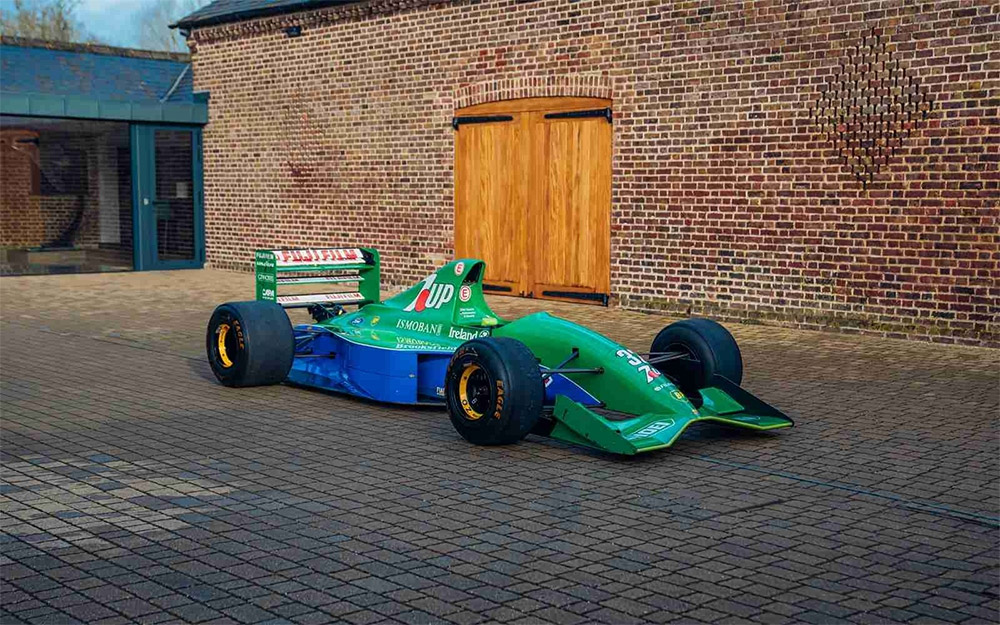Aston Martin Valhalla, the ultra-luxury brand’s first series production mid-engine supercar, is reaping the benefits of the world’s fastest laboratory, Formula 1®. Technological development in F1® is accelerated by the need for speed, reliability and performance. Race proven methodologies, expertise and technologies used by the Aston Martin Aramco Cognizant Formula One® team (AMF1) are being adopted by Aston Martin to intensify the development of future models.
Marco Mattiacci, Global Chief Brand and Commercial Officer of Aston Martin said: “Aston Martin’s vision is to build a range of exceptional, class-leading driver focused cars, crucial in the expansion of our core product line-up. As such our first series production mid-engine supercar will be transformational for this ultra-luxury performance brand as well as for the mid-engine segment. Valhalla represents Aston Martin’s first joint development integration between our road car engineers and Aston Martin Aramco Cognizant Formula One® team’s F1® engineering capabilities through Aston Martin Performance Technologies and demonstrates Aston Martin’s breadth of capabilities with the technical support and expertise of Formula 1®.”
The technical crossover between Aston Martin and its eponymous Formula 1® team, which currently sits in fourth place in the FIA Formula One World Constructors’ ChampionshipTM, is facilitated by the consulting arm of the team, Aston Martin Performance Technologies (AMPT). AMPT is directly assisting Aston Martin’s performance engineering team in three key areas of development – dynamics, aerodynamics and materials.

Claudio Santoni, Aston Martin Performance Technologies Engineering Director, said: “It is a great advantage for a car manufacturer to have access to the unique skills and knowledge of a Formula 1® team. F1® engineers are constantly pushing the boundaries in the pursuit of performance and have developed rapid problem-solving tools. With this knowledge ‘in house’ we can seamlessly bring F1® expertise to road car development.”
Driving Dynamics
Aston Martin Valhalla is a truly driver-focused mid-engine supercar and the vehicle dynamics group in close conjunction with AMPT is working full throttle to deliver the pinpoint dynamics that will provide unprecedented driver engagement. F1® design relies heavily on simulation tools and the methods used to ensure that every moment spent in the simulator brings progress has been put in place for Valhalla. In fact, 90% of the dynamic characteristics and vehicle set-up has been completed in the simulator, with the final development phase completed in the real world, on the road and track.
Valuable input from the AMF1 drivers add a new intensity to the calibration of Valhalla. The elite level skills and knowledge of drivers like Lance Stroll and Fernando Alonso can take vehicle dynamics to a new level as they continue to push the car to the extreme edge of its performance capabilities.
The cockpit ergonomics of Valhalla has also benefited by taking direct cues from Formula 1®, in that the driving position has been optimised with support from AMPT to provide the driver with race car level control in order to maximise the pleasure of driving. The driver’s heels are raised by a false floor, which also contains electronic modules, and the unique carbon fibre bucket seat can be reclined to a greater angle to achieve a seating position more closely aligned to the AMR23 race car, whilst still offering road car comfort. This aids in keeping a low roofline and ensures the driver feels truly connected to the car.
Aerodynamics
The joint expertise of both AMPT and Aston Martin’s aerodynamicists in both road cars and Formula 1® provides the brand with an opportunity to create addictive road cars, with the perfect blend of luxury and performance. A quick look at the underbody of the AMR23 and the underbody of Valhalla, where most of its downforce is generated, illustrates how much F1® technology has gone into the new supercar.
The aerodynamic approach to Valhalla starts in a similar way to an F1® car, by using all elements of the body shape to generate downforce and minimise drag. However, Valhalla is not restricted by F1® regulations so it can benefit from fully active aerodynamic systems at both the front and rear of the car which will generate over 600kg of downforce at 240km/h. This enables Valhalla to constantly adapt front and rear downforce to maximise grip, balance and consistency, or reduce drag depending on the situation and the driving mode selected. This enables drivers to extract the very best from Valhalla’s chassis and tyres, across the full performance range of the car.

Like the AMR23 race car, Valhalla features-multi element wings front and rear, though the front wing is largely hidden from view. The front wing can lie flat in a DRS position to reduce drag or can be angled up to generate huge downforce directly ahead of the front wheels. Behind the front splitter the under-floor surface is concave, creating a low-pressure area that generates downforce. Again, this feature can be controlled as part of the full vehicle active control algorithms on the car.
The multi element rear wing lies flat to create the beautiful clean lines of the car, whilst generating a baseline level of downforce with minimal drag. However, in track mode the wing is raised high into the airflow to maximise its effectiveness. The car then actively manages the angle of attack of the wing to continually balance between maximum downforce and DRS, to maximise performance.
Inspired by F1® vortex generators and aero features, small slotted louvers on the sill, just ahead of the rear wheel, act as mini diffusers to pull airflow out and upwards from under the car, increasing downforce. A roof-mounted snorkel feeds both the engine intake, as it does in F1®, but also serves to feed cooling ducts for turbo intercoolers and to cool the engine’s Hot-V turbo configuration.
The vast knowledge of Computational Fluid Dynamics (CFD) and wind tunnel testing in F1® together with AMPT has been of huge benefit to the road car engineers. The same aerodynamic tooling techniques used to create the AMR23 race car have been used to develop the aerodynamics for Valhalla.
The Valhalla engineering team working directly with AMPT utilised the same CFD software as the AMF1 team, including learnings on model set-up. As in Formula 1®, Valhalla has used a scale model and moving road wind tunnel to develop the car, studying the same processes including ride height sensitivity, the effects of yaw, roll and pitch, steering and so on.

Materials
AMPT and the AMF1 team have been building cars from carbon fibre for many years so there is very little they don’t understand about materials, although the idea of building 999 carbon fibre monocoques will be a novelty to a team used to building just a handful of cars per season. The AMPT carbon technologies team works on developing ideas that evolved in F1® and applying the same approach to Valhalla. This has been of great benefit when it comes to areas such as the simulation of stiffness and crash worthiness testing where great gains can be made by identifying any vulnerabilities before the destructive process of crash testing begins.
The structure at the heart of Valhalla is crafted to maximise stiffness with minimal weight, guaranteeing maximum control with millimetric precision. Designed and engineered by AMPT, which applies their highly specialised F1® expertise and technical capabilities beyond the pinnacle of motorsport, Valhalla’s structure is the product of cutting-edge composite technology.
A complex and exquisite blend of carbon fibre materials, Valhalla’s carbon structure has been created using a novel and proprietary technology developed for Aston Martin. The upper and lower sections of the structure are moulded from carbon fibre using a combination of Resin-Transfer-Moulding process (RTM) and F1® derived autoclave technology. The result is a singular, immensely stiff, strong and light passenger cell which delivers best-in-class dynamic structural attributes and outstanding safety, without compromising driver and passenger ergonomics.
Valhalla is at the forefront of Aston Martin’s transition from internal combustion to hybrid to full electrification. Much has been learned within the engine management group to optimise performance and maximise efficiencies of Valhalla’s bespoke twin-turbo flat-plane V8 engine, which is the most advanced, responsive and highest-performing V8 engine ever fitted to an Aston Martin and, when mated with three e-motors, creates a 1,012 PS hybrid all-wheel drive hybrid powertrain.
Twin electric motors on the front axle enables Valhalla to not only feature four-wheel drive, but also allow the engineers full independent control of the torque applied at the each of the front wheels – a technique known as torque vectoring. Torque Vectoring enables a more positive steering response at turn-in, stronger grip through the corner and improved traction on corner exit. Enhancing the driving experience and performance through all phases of the corner. The front e-motors also provide the reverse function, enabling a weight saving on the rear transmission. A third e-motor is integrated into the transmission, providing additional power to the rear wheels as well as acting as the starter/generator for the ICE engine.

Carlo Della Casa, Aston Martin Product Development Director said: “The knowledge and experience of the AMF1 team personnel at Aston Martin Performance Technologies combined with the skills and know how of our road car development teams has enabled us to bring direct F1® learnings to sportscar development. Our target for Valhalla is to produce a supercar that will set best-in-class standards for performance, dynamics and driving pleasure. Valhalla will use active technologies to reduce the gap between the “Gentlemen driver” and the professional one on track. Having open access to the knowledge within the AMF1® team has been a huge advantage for us as we develop this incredible car.”
The first running prototype will take to the road later this year, with Valhalla set to enter production in 2024.







